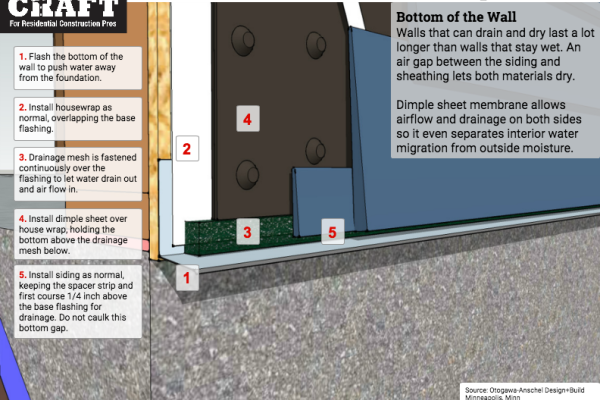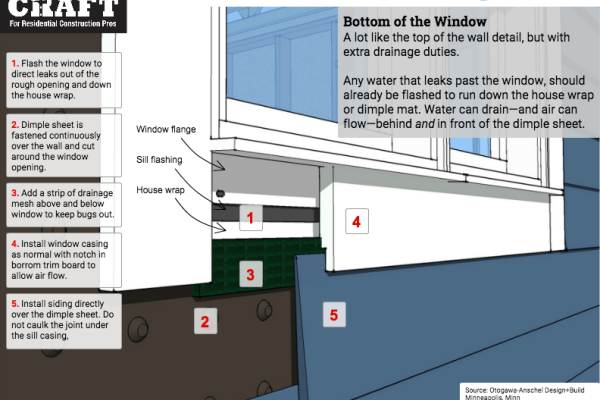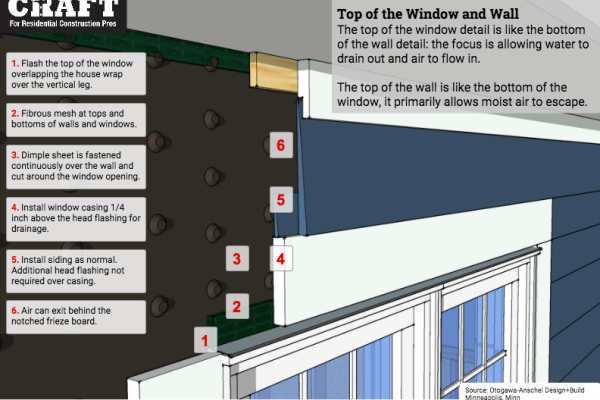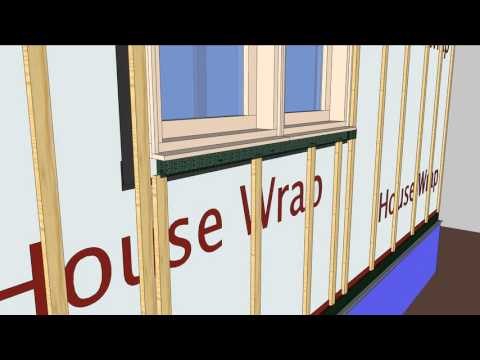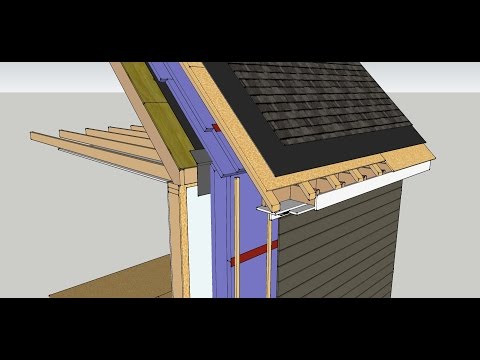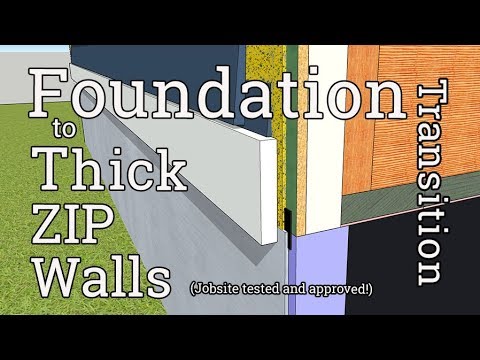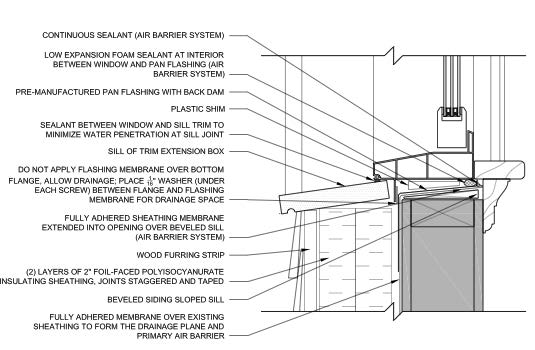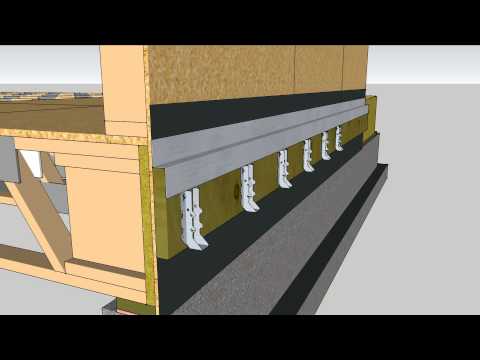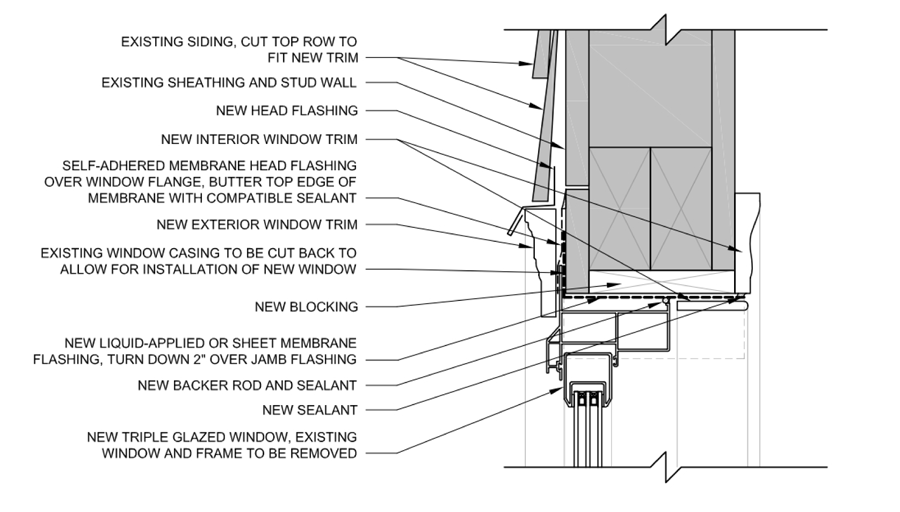Walls that can drain and dry last a lot longer than walls that stay wet.
An air gap between the siding and sheathing lets both materials dry. Dimple sheet membrane allows airflow and drainage on both sides so it even separates interior water migration from outside moisture.
The bottom of the wall detail is like the top of the window and the bottom of the window detail is like the top of the wall detail: the primary focus is allowing water to drain and air to flow.
Any water that leaks in past the window, should already be flashed to run down the house wrap. Water flows behind and within the yellow mat.
Step by step:
- Flash the window to direct leaks out of the rough opening and down the house wrap.
- Dimple sheet is fastened continuously over the wall and cut around the window opening.
- Add a strip of drainage mesh above and below window to keep bugs out.
- Install window casing as normal with notch in bottom trim board to allow air flow.
- Install siding directly over the dimple sheet. Do not caulk the joint under the sill casing,
Source:
- Otogawa-Anschel Design+Build Minneapolis, Minn
More to Explore:
Building Science Corporation:
- Ventilated Wall Claddings: Review, Field Performance, and Hygrothermal Modeling
- Modeled and Measured Drainage, Storage and Drying Behind Cladding Systems
- IRC FAQ: Cladding Attachment Over Insulating Sheathing
Hammer & Hand best Practices manual:
